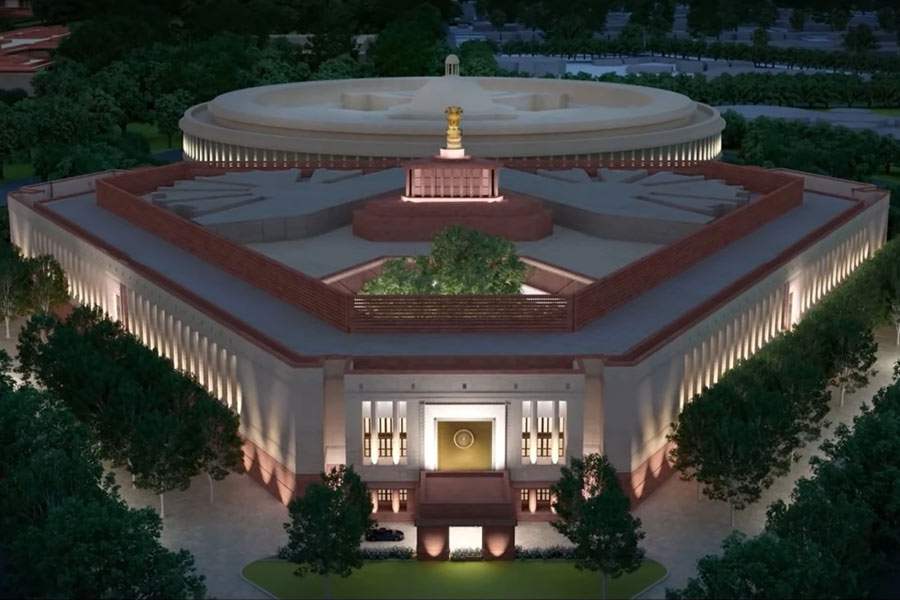Prime Minister Narendra Modi will re-enact the transfer of power ritual of Jawaharlal Nehru during the inauguration of the new Parliament House on Sunday.
Union home minister Amit Shah on Wednesday announced that the Prime Minister would install in the new Parliament a golden sceptre called Sengol in Tamil, which was presented to Nehru on the eve of Independence.
Shah said: “On the night of August 14, 1947, around 10.45pm, Pandit Nehru accepted this Sengol from Adheenams (Hindu priests) from Tamil Nadu…. By doing so in the presence of several leaders, in a way, he completed the process of the transfer of power. These include later President Rajendra Prasad Ji.”
The home minister claimed that on a query of viceroy Lord Mountbatten to Nehru about a ceremony that should be followed to symbolise the transfer of power, Nehru asked C. Rajagopalachari who in turn contacted the Thiruvavadutharai Adheenam — a non-Brahmin Saivite mutt in Tamil Nadu that designed a sceptre akin to a Nandi bull, the vehicle of Lord Shiva, as its orb.
This was crafted by Chennai jewellers Vummidi Bangaru Chetty and Sons as a five-foot silver sceptre coated with gold.
Shah said 20 priests from the mutt as well as the craftsman, 96-year-old Vummidi Ethirajulu, would be present on Sunday.
The Sengol is currently exhibited at the Allahabad Museum.
Shah said: “When the Parliament House is dedicated to the country, respected PM Narendra Modi Ji will humbly accept the Sengol from Adheenams from Tamil Nadu and respectfully establish it near the seat of the Lok Sabha speaker.”
The government and the BJP tried to play up the proposed installation of the sceptre inside the new Parliament building as yet another “historic moment”, which was seen as an effort to counter the decision of the 19 Opposition parties to boycott the inauguration ceremony on Sunday.
The boycott decision has come as a blow to the ruling BJP’s effort to showcase the inauguration as a big achievement of Modi.
The Opposition parties contend that the new Parliament building should be inaugurated by President Droupadi Murmu and not the Prime Minister. Against the backdrop of the boycott decision, home minister Shah was fielded on Wednesday morning to make the surprise announcement of the “Sengol”.
“After Independence, the transfer of power from foreign rule to India was accomplished through a spiritual process, which has been a strong tradition of ancient India. The Sengol is the sacred symbol of this transfer of power,” Shah said.
By afternoon, almost all ministers and prominent BJP leaders posted tweets to hail Modi forthe decision.
BJP president J.P. Nadda described it as a “historic moment” and said that it emphasises the“emotional and spiritual integration of India, from north to south”.
Both Shah and Nadda said the Sengol vesting ceremony was a “sacred Tamil tradition”, indirectly trying to put the DMK in an uncomfortable position.
The government and the BJP sought to project the installation of the Sengol as a Hindutva tradition, hoping that sections in the Opposition would oppose it, leading to a division in their ranks.
There was, however, no criticism of the proposal from any prominent Opposition leader till Wednesday evening.










